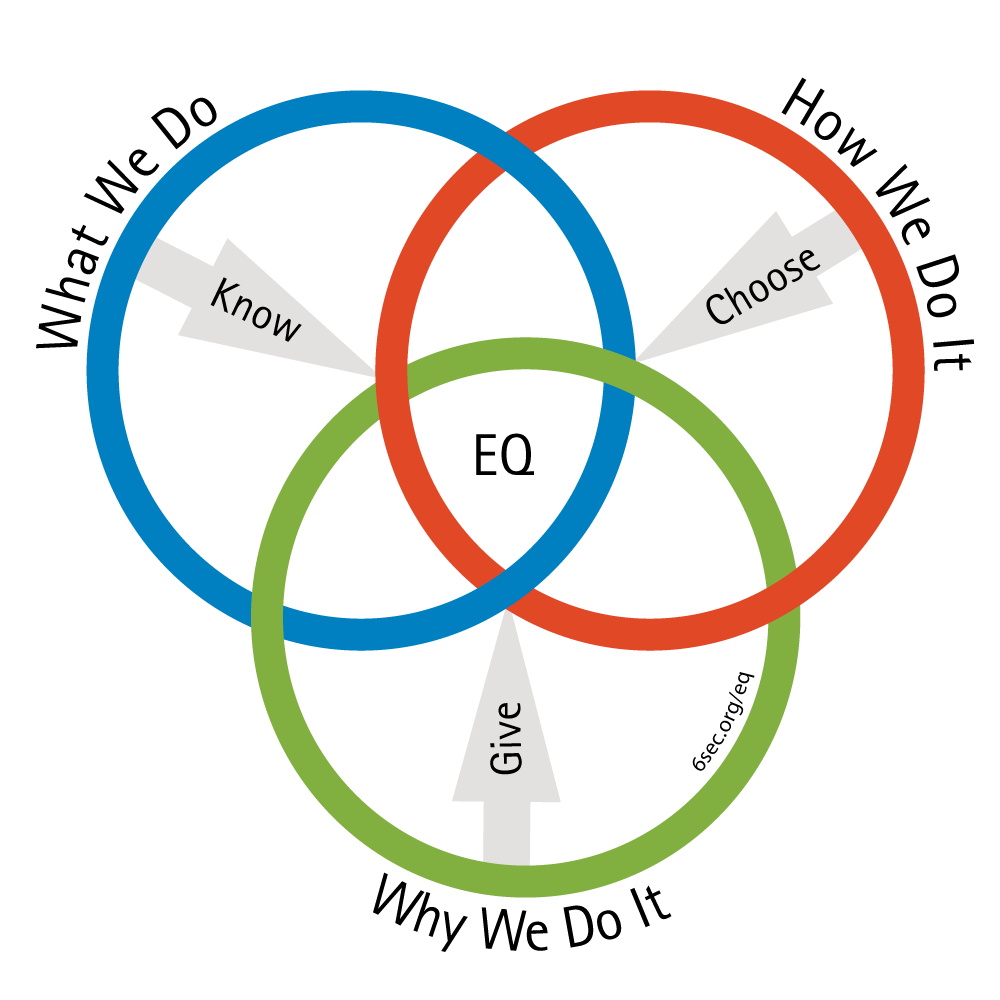Glimmers of Purpose: 3 Emotional Intelligence Tips for Coaching on Purpose in a Short-Term World 🌱
Purpose scores, globally, reached an all-time low (get your copy of the 2023 State of the Heart Report now). But women brought the global average back up a little in 2022, hopefully launching a new trend. Meanwhile, there’s a massive gap to fill.
This data comes from scores on an emotional intelligence (EQ) competency called Pursue Noble Goals.
A Noble Goal is an overarching sense of purpose. We ‘pursue’ it by making it a bigger part of who we are. It’s not just about action, it’s also about relationship with others and self (check out this short video from early in the pandemic from a time when this shift from Doing to Being was so clear).
In our EQ Coach Certification classes, participants are very familiar with the idea of a Noble Goal. It’s a profoundly powerful lever for growth, so it comes up often in coaching practice. Which leads to a frequent question: How do I talk about this with people who’ve not heard of Noble Goals?
To answer, I’d like to offer a short story, a hypothesis, and three tips.
This article is from the 🌱 Emotional Intelligence Coach Newsletter
Click here & choose the newsletters that will help you practice and grow emotional intelligence
A story: Driving through the rain in the mountains of Vermont, talking with my son about colleges, I asked: “In all the places and groups you’ve been part of, where did you like yourself best?” Inelegantly phrased, but it led to a deep conversation that I might summarize in 2 words: Belonging & mattering. He was longing for an environment where he connected with people and purpose. Where he would be called to grow, and supported to do so.
Fast forward to now, when I learned belonging and mattering are two of the strongest drivers of wellbeing. For more on this, see the US Surgeon General’s Framework for Workplace Mental Health and Well-Being – and Six Seconds’ eCourse on how to use emotional intelligence make it work.
A hypothesis: What if everyone has purpose, already inside them? Sometimes it might be a blazing light, sometimes a flickering candle – but what if it’s always there?
I don’t have empirical evidence. Yet in so many places… from car rides to workshops to classrooms to offices… I’ve met so many people who feel a spark of purpose, and often a deep desire to brighten it.
I suspect purpose is one of the most basic of human needs, and, as social animals, it’s entwined with community. With the right relationships, we can feel that support to feed the flames of purpose.
As coaches, it’s not our job to ‘make’ someone talk about purpose. Yet if my hypothesis is even partly correct, it’s going to come up in many coaching sessions. Perhaps not as a fully-formed idea, but as a glimmer we can tend and nourish. Here’s how:
Three coaching tips to strengthen your clients’ sense of purpose (and your own)
- Feel the Glimmers
- Align the Lenses
- Feed the Fire

Feel the Glimmers of Purpose
When someone starts connecting with purpose, I can feel it. How about you? It’s not one of the basic feeling words from the emotion wheel – but it’s palpable. Practicing coaching with emotional intelligence, for me, includes honing this instinct to notice the glimmers. To notice someone’s eyes getting brighter. To feel the warmth in my own heart that tells me to listen deeper. To hear the timbre in my client’s voice that signals a new level of insight.
Sometimes you can also hear the glimmers in your client’s words. It might sound like, “I wish I could be more clear where this was going in the long-term” or “How do I decide what to prioritize,” or even, “Sometimes I can feel a fire inside…” These are all an invitation to tap into purpose.
In some ways, this is the least-practical of the three tips because it’s intangible, yet it’s the most powerful. When you tune into the glimmers of purpose, your clients will as well. Your attention and presence brighten the sparks.

Align the Lenses Toward Purpose
The Six Seconds Model of Emotional Intelligence is an action process with three parts:
Tune in to be more aware. We call this ‘Know Yourself,’ and it helps us see WHAT is going on.
Pause to be more intentional. This is ‘Choose Yourself,’ which helps with HOW to respond.
Connect to be more purposeful. ‘Give Yourself,’ which supports us to connect with WHY.
In the EQ Coach Certification, sometimes we look at these as three interlocking rings, shown below. As you listen to your client, listen from these perspectives.
WHAT is about words and actions. What they did and didn’t do.
HOW is about the impact. How those words & actions affected them and others.
WHY is about the meaning. Why the words+actions+impact matters.
As you hear these three perspectives, you’ll also notice how they’re aligned or not. We’re all often in a state where WHAT we’re doing and HOW we’re showing up isn’t leading to the desired WHY. Once you start to notice these misalignments, you can ask simply powerful questions such as: “I think you said you want more X, to get there, what might you do differently?” (or “How might you do that differently?”)

Feed the Fire of Purpose
In my short story, above, I asked about my son’s past experiences as a way to build toward the future. This helped me learn from him, and helped him clarify what he’s looking for. This is akin to ‘positive psychology’ pioneer Barbara Fredrickson’s Broaden-and-Build theory, where we amplify the power of past successes.
We can ‘feed the fire of purpose’ by remembering times when purpose was more vivid. This might sound like, “You talked earlier about being clear about the long-term. Was there a moment in your life when you felt some of that clarity? … At that time, what helped make it more clear?”
As coaches grounded in emotional intelligence, we know that emotions catalyze growth and change. So ‘feeding the fire of purpose’ works even better when we can tap into the emotions that brighten purpose. This can sound like, “What were some of your feelings in that time that were helping you?” or, “When you had that sense of connection, what did it feel like?” We can also ask this in an imaginary way: “I hear you describing this future vision – if you imagine yourself there, what are some feelings that would be supporting you?”
As usual, my recommendation is you try these tips on yourself first. Then adapt and experiment – and please share with the rest of us what you learn along the way!
And, if you have questions you’d like me to explore in a future 🌱 EQ Coaching newsletter and/or video, please post in the comments, or feel free to reach out to me via our contact form.
… and don’t forget to Click here to subscribe to the EQ Coach Newsletter.
Whether you’re a professional coach, or contemplating earning certification as a professional emotional intelligence coach*, or you’re someone who uses coaching techniques to support others: of course these questions apply to us first.
* Did you know? In addition to top-level accreditation from the International Coaching Federation, the EQ Coach Certification is one of a handful of coaching certifications in North America that also provides master’s level credit? You’ll earn almost ⅓ of your MBA or MA in this program.
For more on EQ and Coaching 🌱, I recommend:
Neuroscience ‘tricks’ for change
- How Emotional Intelligence Coaches Use Emotions in Goal Setting - October 2, 2024
- 3 Winning Strategies for Successful Change Leadership: Coaching with Emotional Intelligence - September 4, 2024
- 3 Emotional Intelligence Tips for the Essence of Coaching - July 31, 2024

